Looking for some hiking in Luang Prabang? Just across the Mekong River from town is a fantastic half-day walk known as Chomphet Hike. Though only a 2-minute boat ride from the prosperous UNESCO World Heritage Town, Chomphet District feels worlds away and seemingly forgotten.
This hike is not easy, mainly because the trail is unmarked and parts of it overgrown (getting a wee lost is inevitable), but a walk on the other side of the Mekong will reveal crumbling temples shrouded by dense forest, beautiful views of Luang Prabang, old relics, a sacred cave, a zany abbott and a few more unexpected surprises.
Hiking in Luang Prabang – The Chomphet Hike
Summary: an unguided hike in Luang Prabang, taking you through jungle and teak forest, past old, sacred temples and quiet scenes of monastic life
Distance: as little as 1 km, up to 10 km, depending on route…or how lost you get
Time: the hike outlined below (arriving at Ban Xieng Mane Village to Wat Khok Pab) takes 2-3 hours. For a challenging half-day hike, complete route as a circuit. See Hobo Map.
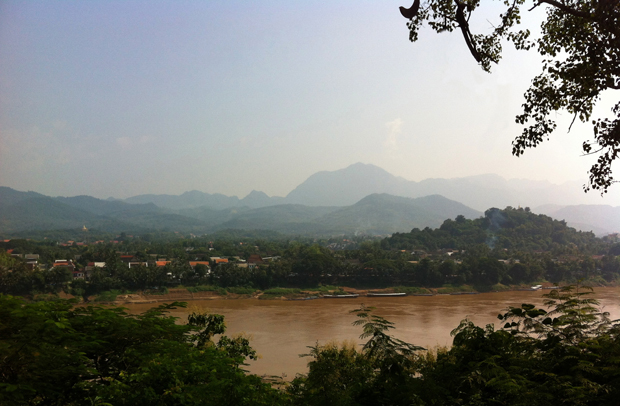
What to bring:
- decent walking shoes/sandals (I love Keen sandals for hiking)
- plenty of water, snacks
- mosquito repellant, hat
- Hobo Maps: Chomphet Hiking Map, printed or saved to device
- money for temple entrance fees
Trail Conditions & Tips
- Dirt road, dirt single track, loose gravel and rock. Trail is often overgrown with brush or covered with leaves.
- Exposure: Road exposed; trails are shaded.
- Gradient: moderate
- Trails are unmarked. Use the Hobo Map and try to make note of key landmarks along the way (like the wats).
- This hike would be very challenging during rainy season.
- Avoid the midday heat.
- If you aren’t an experienced hiker, stick to the path along the Mekong River.
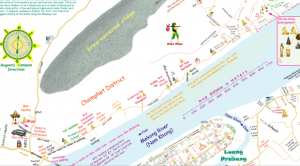 This is a general outline to be used in conjunction with Hobo Map’s Chomphet Hiking map which you can get online free here. I’ll give you helpful, important details but won’t spoil the fun of discovery.
This is a general outline to be used in conjunction with Hobo Map’s Chomphet Hiking map which you can get online free here. I’ll give you helpful, important details but won’t spoil the fun of discovery.
START
Take the passenger ferry from Luang Prabang’s main boat landing Tha Heua Luang (behind the Royal Palace Museum, on the Mekong road) or hire a boat from any of the Mekong River boat landings. It should be no more than 10,000 kip per person. The boat will take you to Ban Xieng Mane. If you haven’t been outside of Luang Prabang town, this village may come as a shock. It’s fairly basic and rough. After walking up from the boat landing, turn right and walk through the village until the steps of Wat Chomphet.
1. Wat Chomphet
100 or so steep steps lead up to the simple but pretty Wat Chomphet. Here you will have one of the best views of Luang Prabang from across the river. The fee to enter the grounds is 10,000 kip.
**On that note, walking along the trail is free but if you leave the path to see a wat, you have to pay an entrance fee. These are living, working wats where monks study and live, so please be respectful. Men should wear shirts; women should dress modestly and cover shoulders.**
Perched on the hilltop is Wat Chompet, estimated to date back to the 18th Century. Though the temple has certainly seen better days, a small plaque notes restoration work. Stop to notice the gold-stenciled images on the rich, red ceiling.
The walk between Wat Chomphet and the next wat is one of the most pleasant of the entire trail.
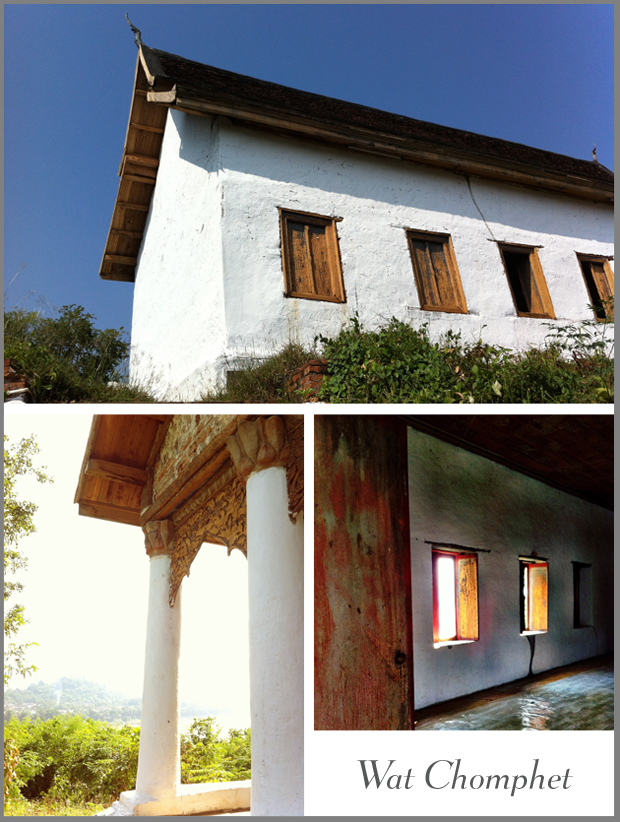
2. Wat Long Khoune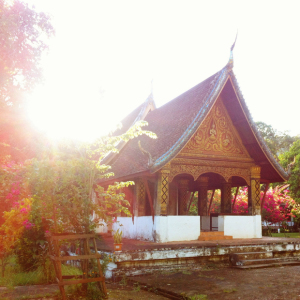
18th Century, front porch added in 1937, restored in 1994. A former royal retreat, soon-to-be Kings would spend three days here before the coronation ceremony at Wat Xieng Thong. Note the Chinese guardians painted beside the entrance and the gold stencilling on the ceiling.
There are usually boats available here that can take you back to town. Buy tickets here for Wat Tham Sackkalin cave.
3. Wat Tam Sackkalin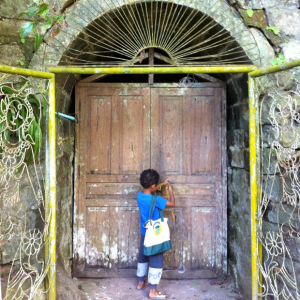
In Laos, caves are considered sacred places and over the centuries they fill with Buddha statues. The joy in visiting ancient Sackkalin cave monastery is that local kids keep the key and they will lead you inside. Sure, a 5-year old is leading the way but it still feels a little Indiana-Jones-esque. Give them a small tip at the end.
4. Wat Had Siaw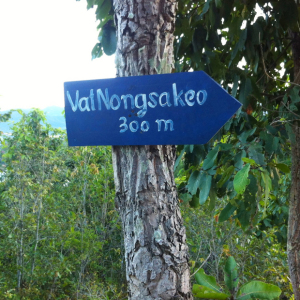
After about a kilometer of walking you should reach Wat Had Siaw. It’s known for its walking meditation building which unfortunately seems to be used mainly for storage (look for the long narrow building). Walk through the grounds to the back and look for a sign “Vat Nongsakeo 300 m”. The path continues into the forest before splitting. Either path you choose, you have to cross a bamboo fence and continue uphill through the forest.
5. Wat Nong Sakeo on a pond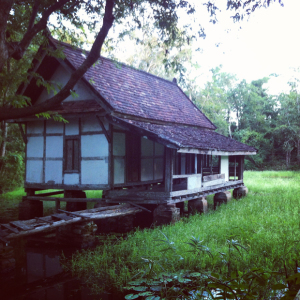
The sight of Wat Nong Sakeo is surreal and eerie. The temple is built on a pond and the dilapidated building seems abandoned – but a discarded orange robe here, a single flip-flop there hints that there’s an unseen spirit around…
As the Hobo Map indicates, there’s a sign “1.5 km to Nakham” pointing down one path. If you choose to complete the hike as a circuit, heading up over the tree-covered ridge to Ban Nakham, this is the direction you go.
Otherwise, head in the opposite direction, uphill through the teak grove. Follow the white stone markers on the ground to guide your way to the 7-head Naga on the ridge top.
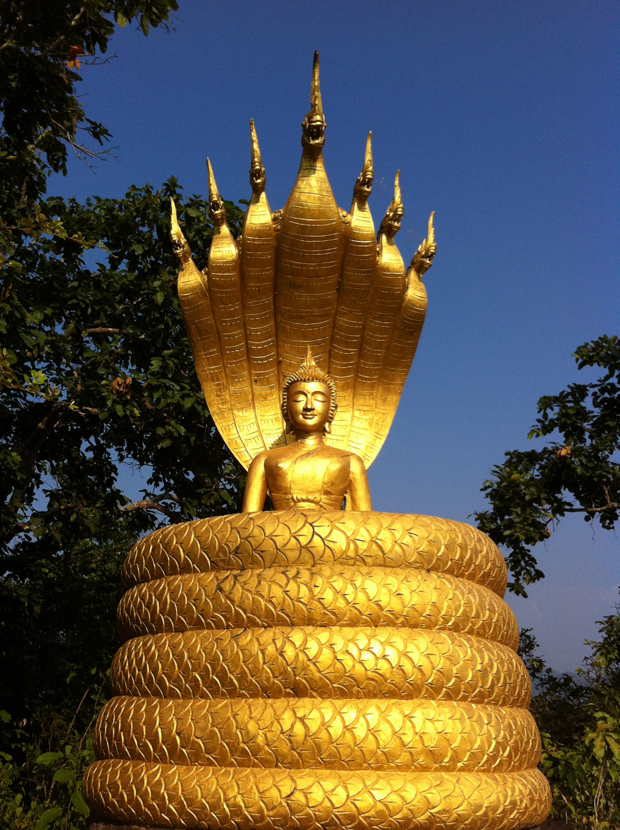
Now back down to the river. The path downhill from the statue, leading towards the Mekong is loose, crumbly dirt. Take care. The path will eventually lead you to Vat Khok Pab.
6. Wat Khok Pab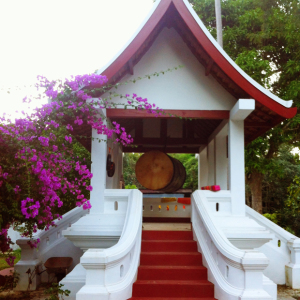
Hobo Maps curiously indicates “barking dogs” and true enough, you’ll be greeted by a pack of them. The gardens here are beautifully done and painstakingly maintained. Legend has it that this wat is led by a rogue abbot who has formed a sect considered a bit strange for mainstream Luang Prabang Buddhism.
The good news is that Khok Pab usually has boats available to ferry you back to town, to a well-earned Beer Lao.
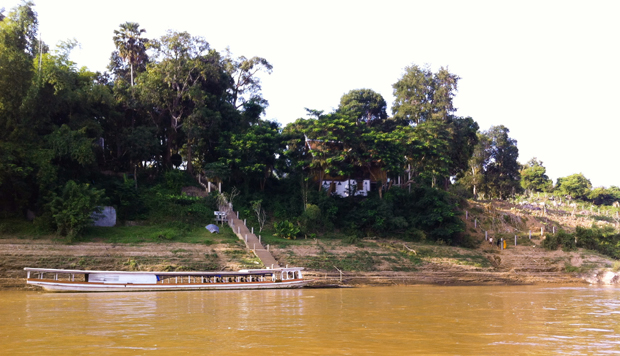
Resources:
Heywood, Denise. (2008) Ancient Luang Prabang. Bangkok: River Books.
Hobo Maps: http://hobomaps.com
You might also like:

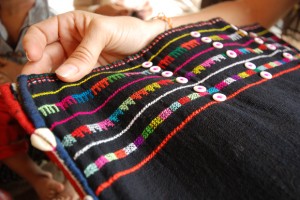
Pingback: Luang Prabang, Laos | Saca La Petaca()